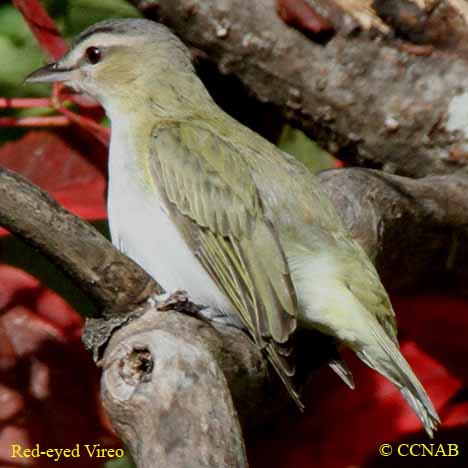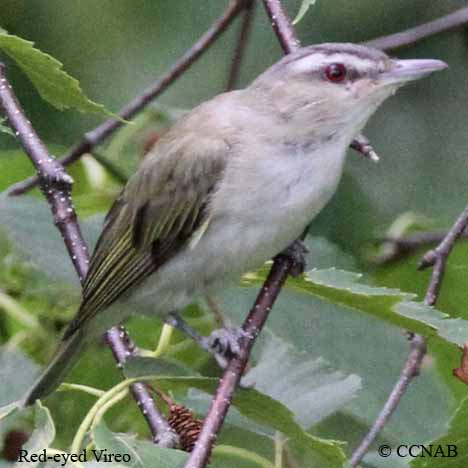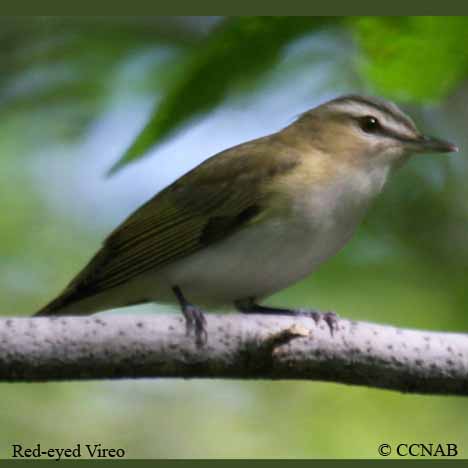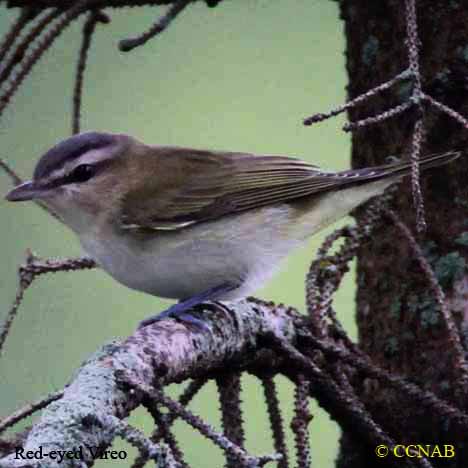North American Bird Search Box
This search box can be used to find bird species using bird's english, french or latin name, or to identify bird by its 4 letter Alpha Code
Field Guide for all the Birds of North America
Red-eyed Vireo
4 Letter (english names) Alpha Code: REVI (1)
Viréo aux yeux rouges
Vireo olivaceus
Information, images and range maps on over 1,000 birds of North America, including sub-species, vagrants, introduced birds and possibilities
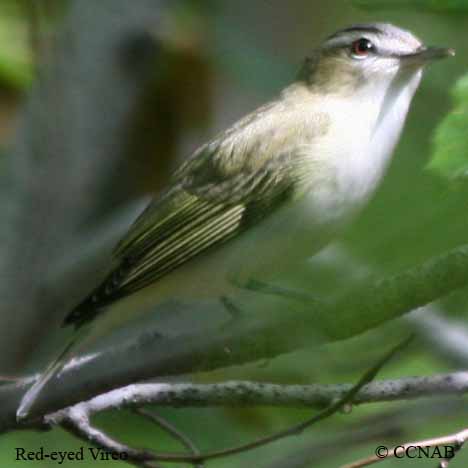
Species: The Red-eyed Vireo (Vireo olivaceus) is the most common and has the widest range among vireo species seen in North America. It is known for its constant singing especially when on its breeding territory and throughout the summer. It is one of the larger vireo species seen on the continent. It is usually seen in the crown of deciduous trees, moving about gleaning insects from the leaves and branches. In the winter months, it will feed on seeds and fruit.
Distinctions: The male and female are similar looking in appearance. It has a large bill with a visible hook at the end of it. Recognized by its bluish gray crown, black line at base of crown, white eyebrows, dull yellowish cheeks and nape, dull yellow showing along flanks and undertail. Adults have a white breast and juveniles may have larger areas of yellow along their flanks. Their backs are green and no wing bars are visible. Red eyes are more easily seen at close range and in good light.
Voice: Deliberate call notes, repeated over and over throughout the day, consists of an array of musical notes similar to the robin.
Nesting: Three to five white eggs, speckled with brown or black spots. Suspended from a crotch on a branch high up in a mature tree. The nest is composed of strips of wood bark, plant fibres and other fine materials.

Life, Habitat & Pictures of North American Vireos
| B L | W W | W | Family | Latin Name |
|---|---|---|---|---|
| 6" 15.2cm | 10" 25.4cm | 0.6oz 17g | Vireonidae | Vireo olivaceus |
North American Birds Videos
- Click here
- Click here - Calling
- Click here
North American Bird Calls
- Click here
- Click here
- Click here
- Summer
- Year Around
- Winter
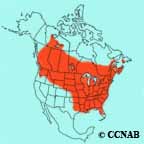
Distribution: It is found throughout North America, from the western side of Newfoundland, as far north as James Bay, bordering Ontario and Quebec. Parts of the western Northwest Territories to the western coast of British Columbia, south into Oregon and through the northern regions of the midwestern states, down into Texas and over into Florida and up into Canada.
Reference to Other Bird Site:
ABA - American Birding Association This site represents an organization that maintains official records of all birds species that have been proven to have been seen inside the perimeters of the North American Continent and the surrounding bodies of water. Regular revised versions are posted to keep the bird list current at all times. This is the list used by all serious birders over their lifetime. You may be aware of the movie called the "Big Year". It was with this list that all the competing birders used in an attempt to set a new record as to how many bird species that could be seen by an individual birder in one calendar year.
